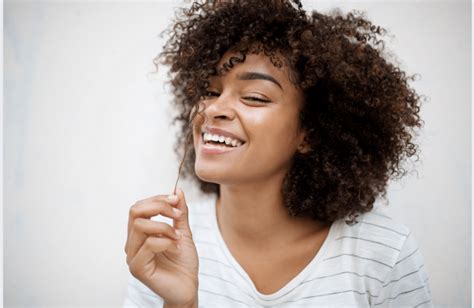Introduction
Beautiful, healthy hair starts with moisture. When your hair is properly hydrated, it’s soft, shiny, and manageable. If your hair is dry and brittle, it’s more prone to breakage and damage.

The good news is that there are plenty of things you can do to keep your hair moisturized and healthy. In this guide, we will discuss the importance of moisture, identify the signs of dry hair, and explore the best ways to hydrate your locks.
The Importance of Moisture
Moisture is essential for healthy hair because it:
- Prevents breakage: Moisturized hair is more flexible and less likely to break.
- Adds shine: Water reflects light, which gives your hair a beautiful shine.
- Improves manageability: Moisturized hair is easier to comb and style.
- Protects against damage: Moisture helps to form a protective barrier around your hair, which protects it from heat, chemicals, and environmental damage.
Signs of Dry Hair
There are a few telltale signs that your hair is dry:
- Brittleness: Dry hair is more prone to breakage.
- Dullness: Dry hair lacks shine.
- Coarseness: Dry hair feels rough and coarse to the touch.
- Split ends: Split ends are a common sign of dry hair.
- Static: Static occurs when there is a buildup of positive and negative charges on your hair. Dry hair is more likely to develop static because it lacks moisture.
How to Moisturize Your Hair
There are a few different ways to moisturize your hair:
- Use a conditioner: Conditioner is a leave-in product that helps to soften and detangle your hair. It also helps to restore moisture to your hair.
- Use a deep conditioner: A deep conditioner is a more intensive treatment that helps to repair and hydrate your hair. Deep conditioners are typically used once or twice a week.
- Use a hair mask: A hair mask is a deep conditioning treatment that is left on for a longer period of time. Hair masks are typically used once or twice a month.
- Apply a leave-in conditioner: A leave-in conditioner is a product that is applied to your hair after you wash it. Leave-in conditioners help to keep your hair moisturized throughout the day.
- Use a serum: A serum is a lightweight product that is applied to your hair before you style it. Serums help to protect your hair from heat damage and add shine.
How to Prevent Dry Hair
There are a few things you can do to prevent dry hair:
- Wash your hair less often: Washing your hair too often can strip it of its natural oils. Try to wash your hair every 2-3 days, or even less often if you have dry hair.
- Use a gentle shampoo: When you do wash your hair, use a gentle shampoo that is designed for dry hair. Harsh shampoos can strip your hair of its natural oils.
- Use lukewarm water: Hot water can damage your hair and make it more dry. Use lukewarm water to wash your hair.
- Get regular trims: Split ends can travel up the hair shaft and cause breakage. Get regular trims to remove split ends and keep your hair healthy.
- Protect your hair from the sun: The sun’s UV rays can damage your hair and make it dry. Wear a hat or scarf when you’re outdoors to protect your hair from the sun.
- Avoid heat styling: Heat styling tools can damage your hair and make it dry. Try to avoid using heat styling tools as much as possible.
- Eat a healthy diet: A healthy diet can help to improve the health of your hair. Eating plenty of fruits, vegetables, and whole grains can help to provide your hair with the nutrients it needs to stay healthy and hydrated.
Tips and Tricks
Here are a few tips and tricks for moisturizing your hair:
- Apply conditioner to the ends of your hair first. The ends of your hair are the oldest and most damaged, so they need the most moisture.
- Leave conditioner in for a few minutes before rinsing it out. This will give the conditioner time to penetrate your hair and do its work.
- Use a wide-toothed comb to detangle your hair. A wide-toothed comb will help to prevent breakage.
- Avoid brushing your hair when it’s wet. Wet hair is more prone to breakage.
- Apply a leave-in conditioner to your hair after you wash it. Leave-in conditioners help to keep your hair moisturized throughout the day.
- Use a serum to protect your hair from heat damage. Serums help to form a protective barrier around your hair, which protects it from heat, chemicals, and environmental damage.
Comparison Pros and Cons of Different Moisturizing Methods
| Moisturizing Method | Pros | Cons |
|---|---|---|
| Conditioner | Inexpensive, easy to use, can be used daily | Can weigh hair down, can leave hair feeling greasy |
| Deep conditioner | More intensive treatment, can repair and hydrate damaged hair | Can be time-consuming, can be expensive |
| Hair mask | Deep conditioning treatment that is left on for a longer period of time | Can be messy, can be expensive |
| Leave-in conditioner | Helps to keep hair moisturized throughout the day, can be used on all hair types | Can leave hair feeling greasy, can build up on hair |
| Serum | Protects hair from heat damage, adds shine | Can be expensive, can leave hair feeling greasy |
Conclusion
Moisture is essential for healthy hair. By following the tips and tricks in this guide, you can keep your hair moisturized and looking its best.
